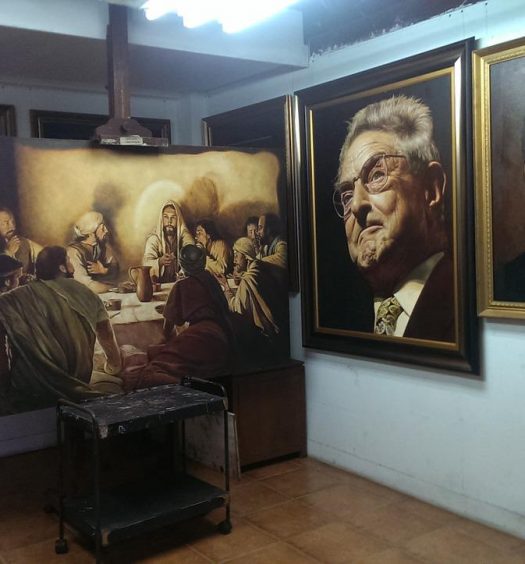Yogyakarta province is one of the most densely populated areas of Indonesia. The city came into being in 1755, after the division of Mataram into the Sultanates of Yogyakarta and Surakarta (Solo). Gamelan, classical and contemporary Javanese dances, the wayang kulit leather puppet theatre and other expressions of traditional art will keep the visitor spellbound. Local craftsmen excel in the arts of batiks, silver and leatherwork.

Batik Workshop
In the middle of South Central Java lies the magical region of Yogyakarta, the cradle of Javanese culture and tradition. In the north, the volatile, Mount Merapi – the Fire Mountain with captivating physical beauty stands vigorously guarding the surrounding nature.
This gigantic volcano, sometimes dangerous with its eruption and lava spitted from its crater, but at the same time gives tremendous fertility to the land. That’s the reason why the farmers – inhabitants living in its slope do not want to leave their ancestor’s place of birth. They have a mystical relation with Merapi to live in harmony with ‘the rulers’ of the mountain to keep them safe and peaceful.

Merapi volcano
It disclosed that the name Jogja, instead of Yogyakarta or Yogya, is used as a promotion to market Yogyakarta since Y is a difficult alphabetical start for most international audiences -both reading and spelling. While Jogja is easily pronounced as JOG-ja, even JOG could be used as a nickname.
Yogyakarta is known for its silverwork, leather puppets used for shadow plays (wayang kulit), and a unique style of making batik dyed fabric. It is also known for its vivid contemporary art scene. Yogyakarta is also known for its gamelan music, including the unique style Gamelan Yogyakarta, which developed in the courts.

Prambanan Temple
Water Castle
Built-in 1758 by Sultan Hamengkubuwono I just west of the Kraton, part of this pleasure garden and castle is at present no more than an intriguing collection of ruins, pools, arches and underground passages enclosed by massive walls, however, the central courtyard with the nymph-baths has been restored. The Water Castle is located in the older part of the city within walking distance from the Bird Market. Many batik workshops line the avenue leading to the pleasure garden’s entrance.
Imogiri
Imogiri is the official cemetery of the royal descendants from Yogyakarta and Surakarta. The royal graveyard is located on a hilltop, reachable by 345 stone steps leading to it. Imogiri is about 17 kilometres southeast of Yogyakarta and easily accessible by bus or car. The tombs are built within three main courtyards. Entry into the smaller courtyards housing the tombs of the princes is allowed only on Monday 9AM – 12PM or Friday 1PM – 4PM. Traditional Javanese dress has to be worn, which however can be hired on the spot at a modest fee. The cemetery is closed during the Moslem month of Ramadhan.












August 12, 2023
Awesome article post.Thanks Again. Really Cool.